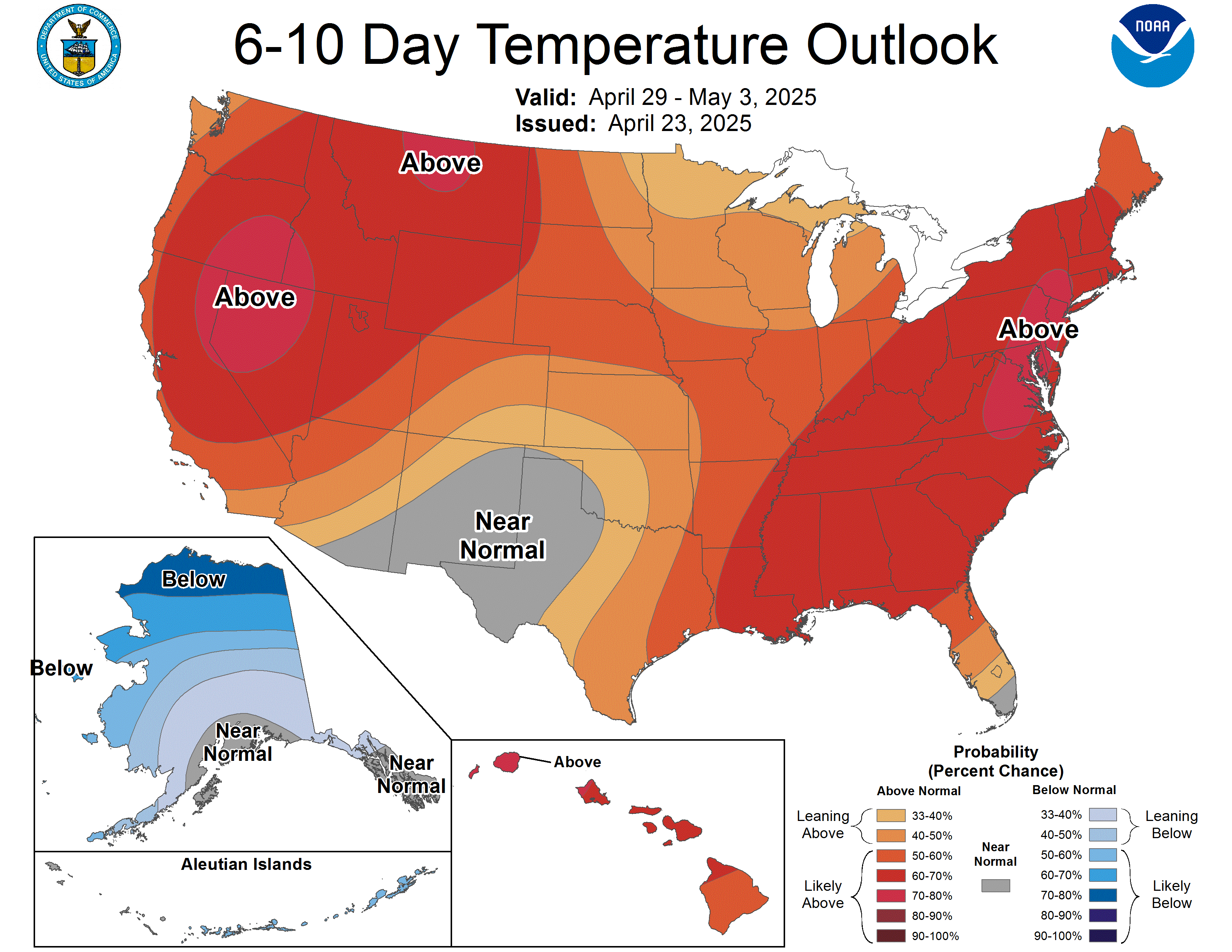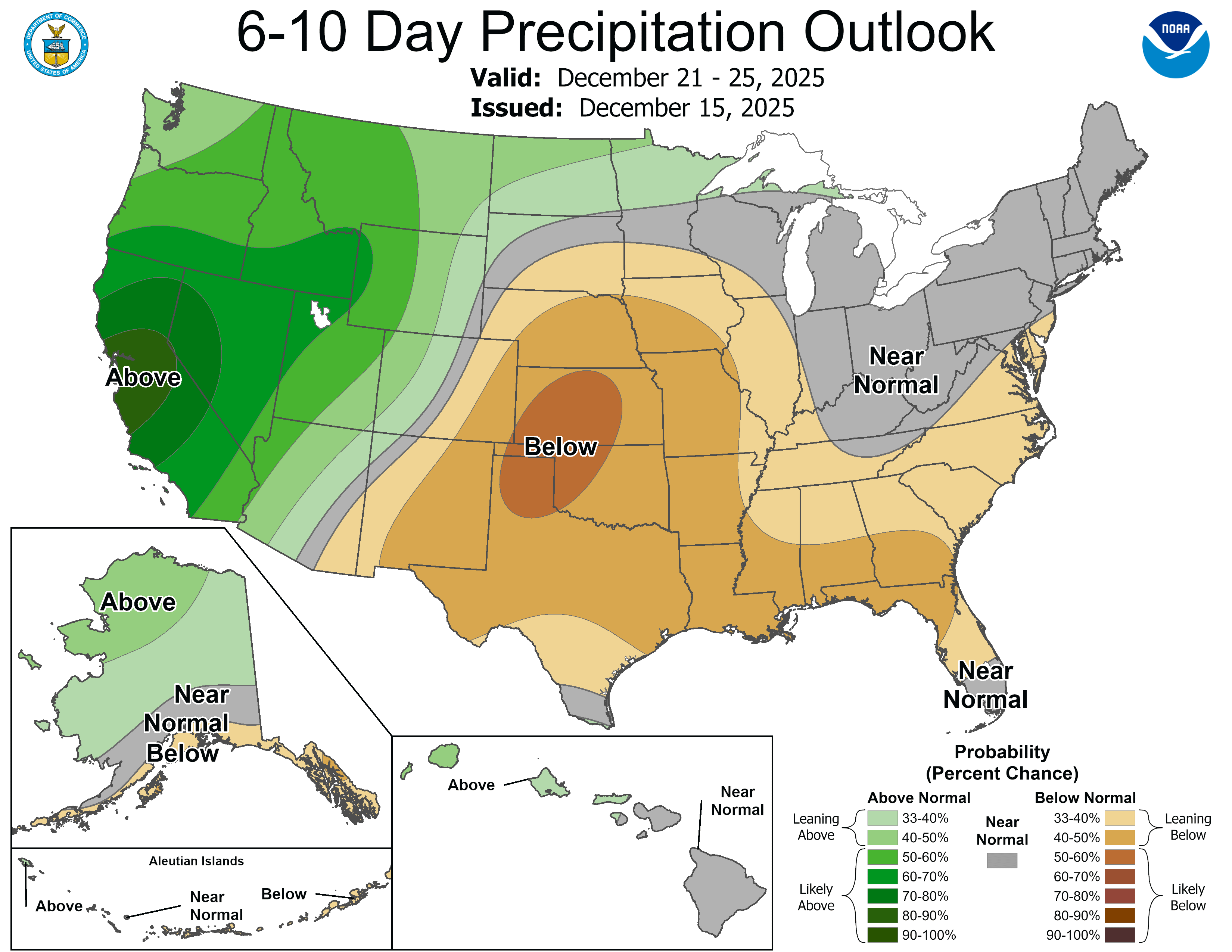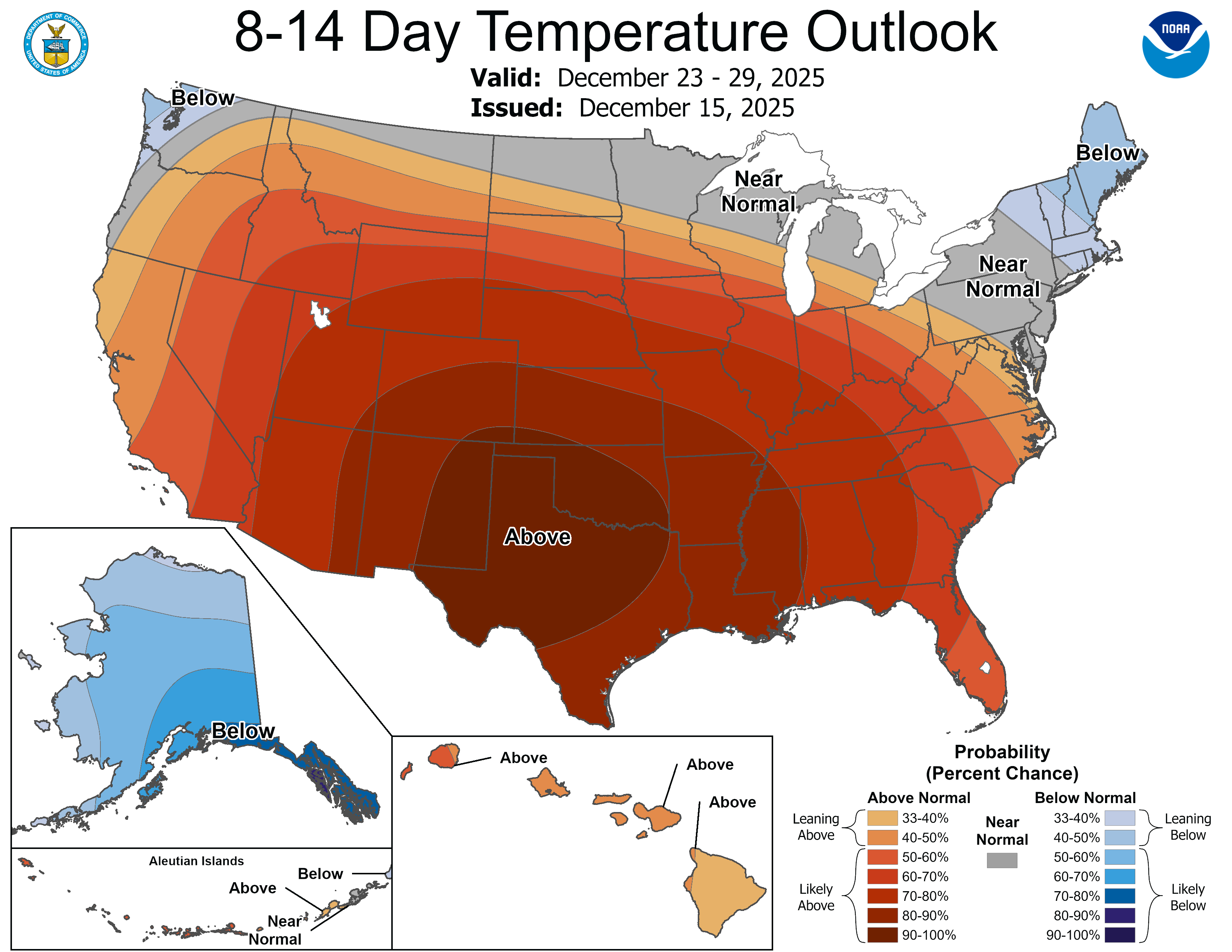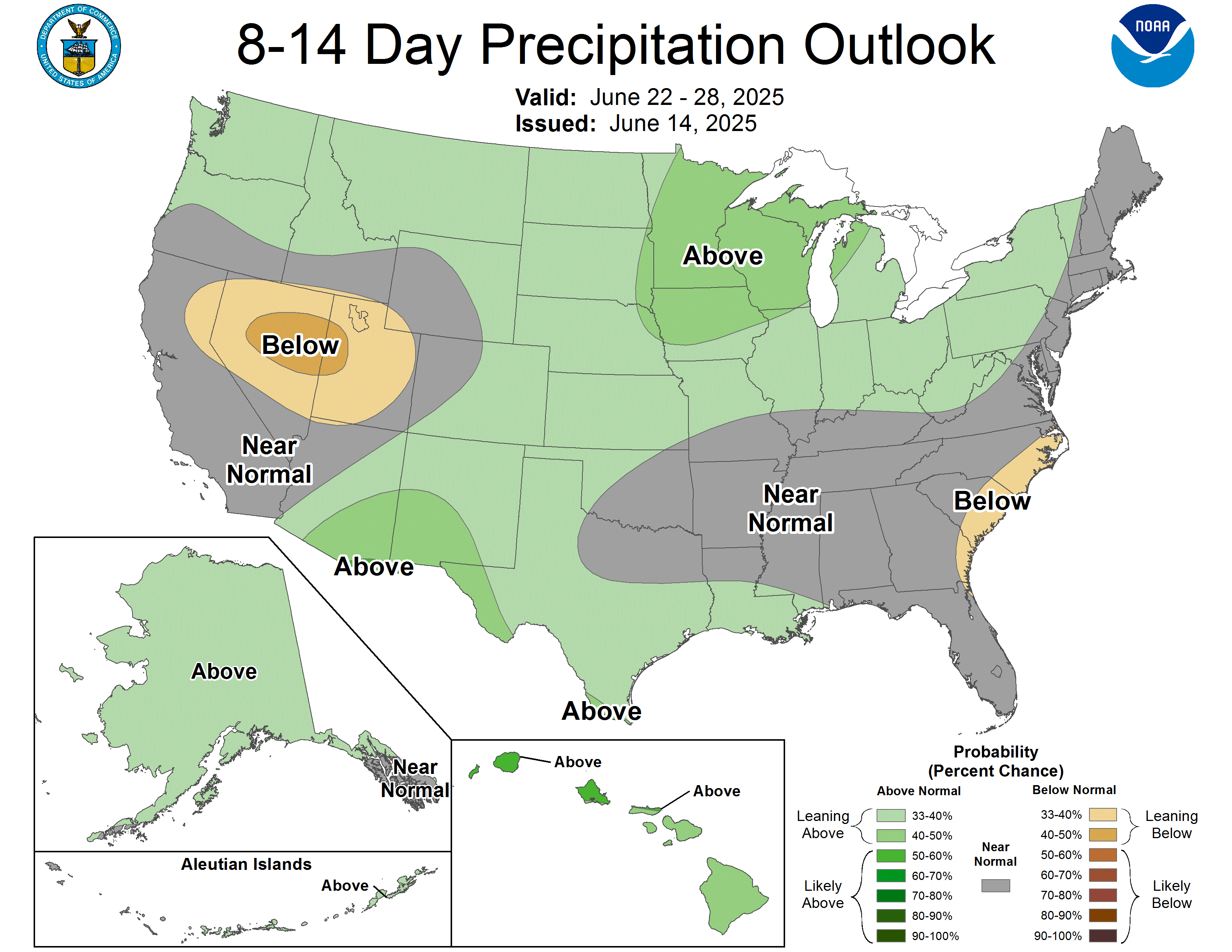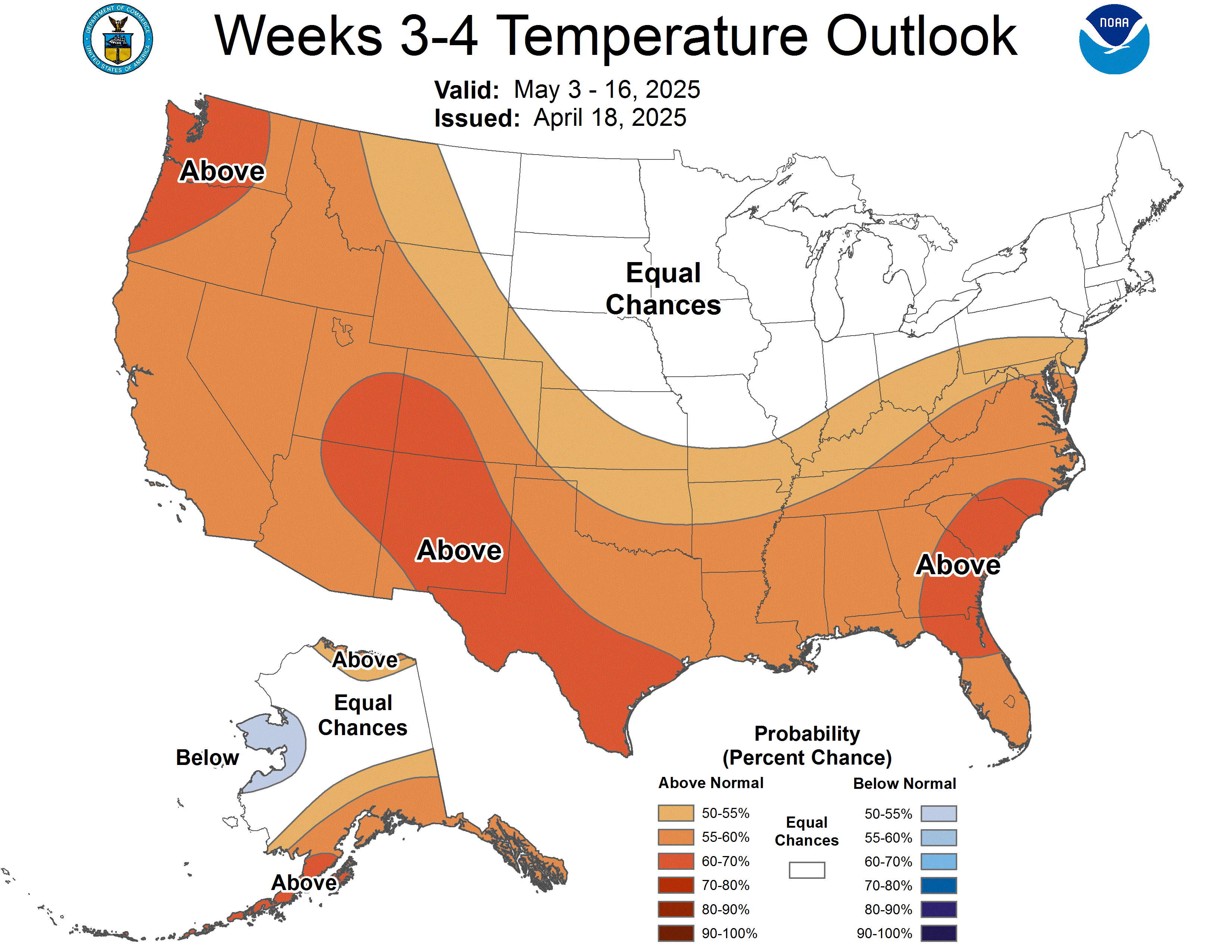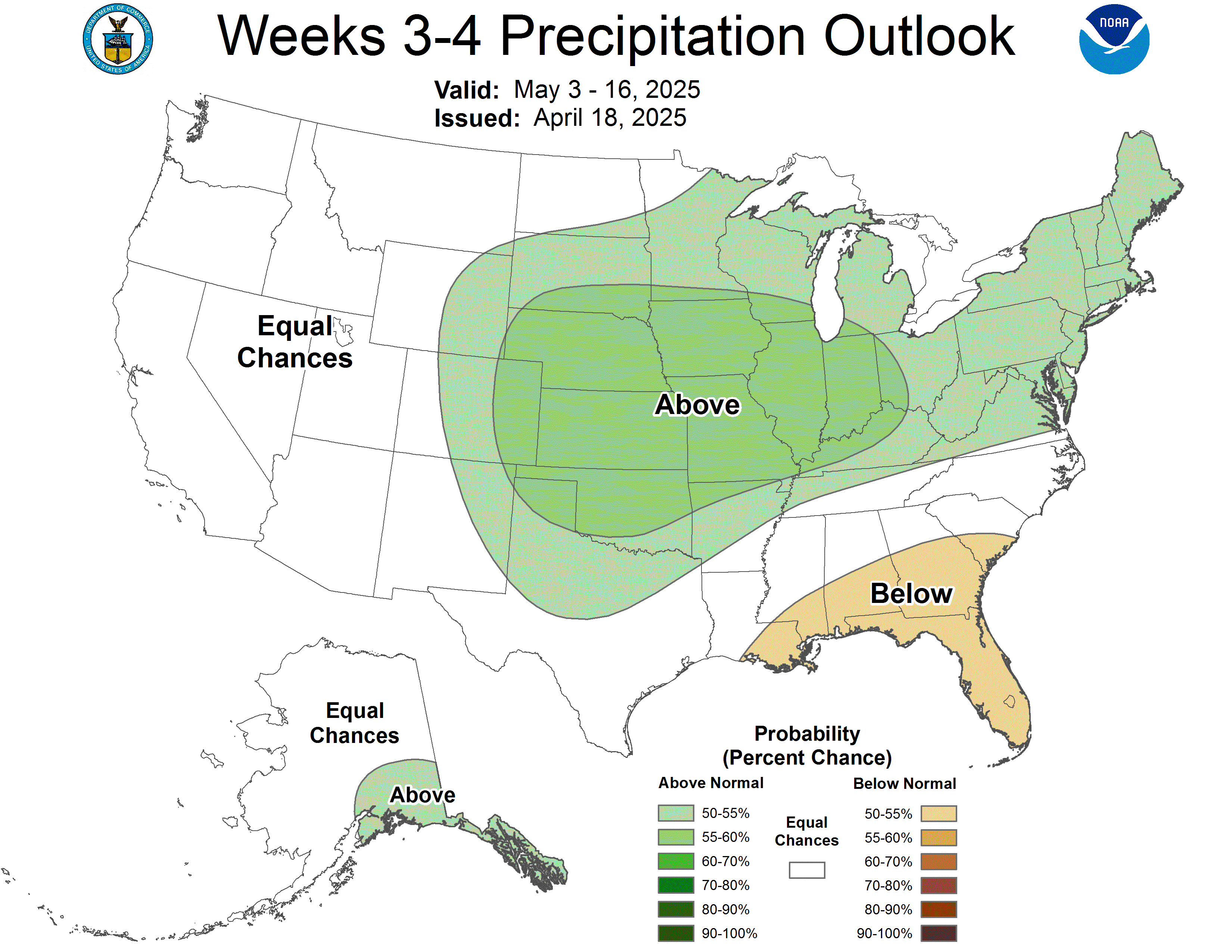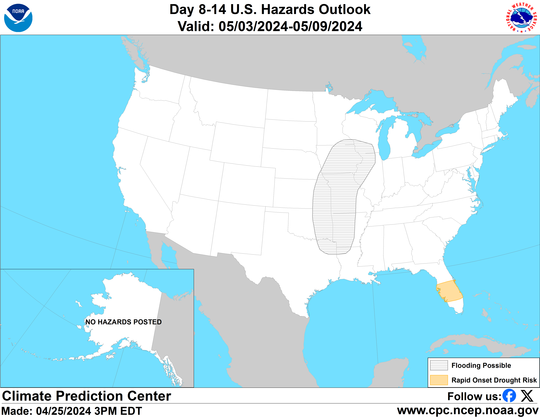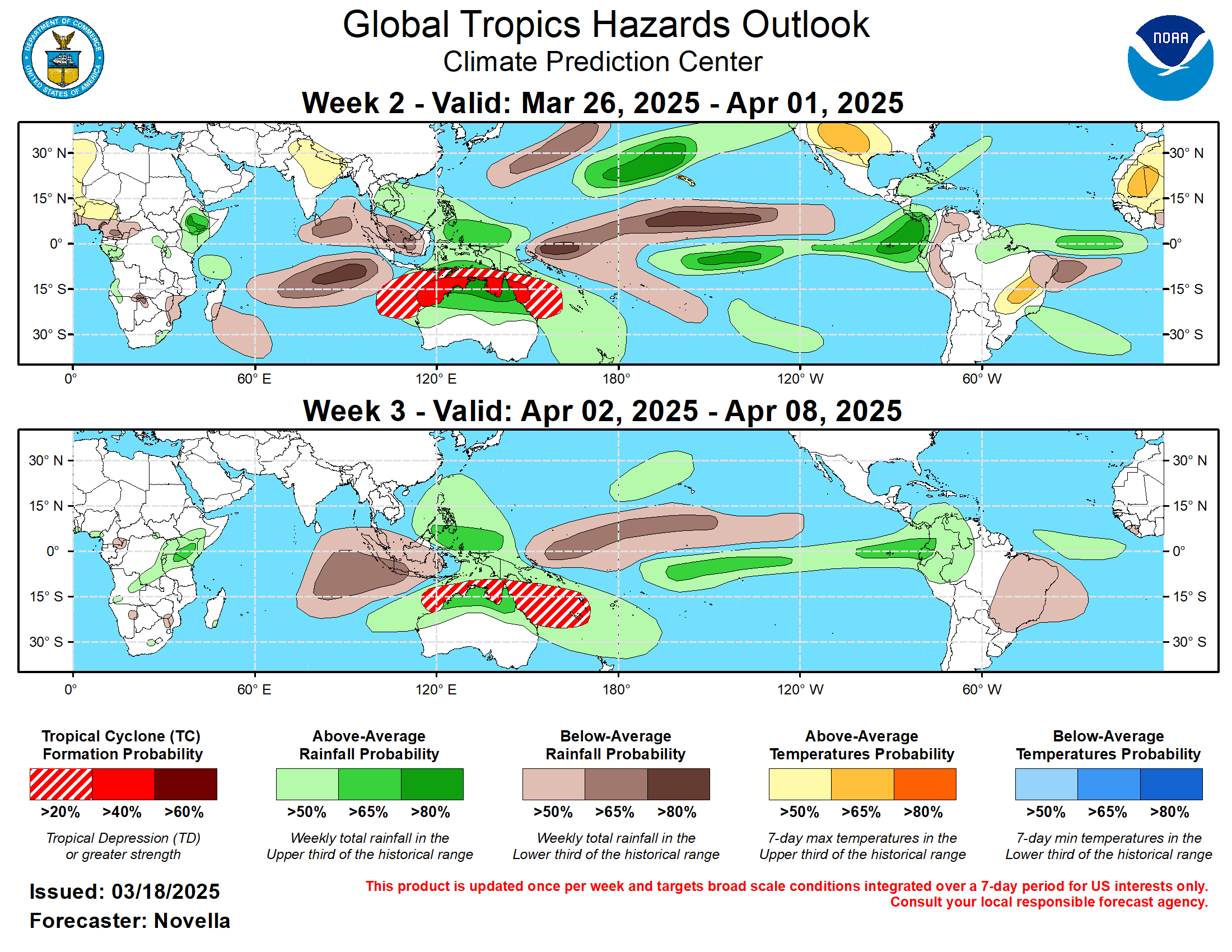This article focuses on what we are paying attention to in the next 48 to 72 hours. The article also includes weather maps for longer-term U.S. outlooks (up to four weeks) and a six-day World weather outlook which can be very useful for travelers.
First the NWS Short Range Forecast. The afternoon NWS text update can be found here after about 4 p.m. New York time but it is unlikely to have changed very much from the morning update. The images in this article automatically update.
Short Range Forecast Discussion
NWS Weather Prediction Center College Park MD
Fri Feb 14 2025
Valid 12Z Fri Feb 14 2025 – 12Z Sun Feb 16 2025…A western U.S. storm system bringing heavy rain into California and
widespread winter weather impacts across the Intermountain West……An impactful heavy rain and flooding event emerges over the Ohio
Valley, Tennessee Valley, and parts of the Appalachians this weekend with
severe thunderstorms across the Deep South……Widespread 6 to 10 inches snowfall expected from the upper Midwest
tonight, then through the Great Lakes into New England this weekend with a
swath of sleet/ice just to the south……Temperatures will be down to around 5-10 degrees below average across
much of the eastern U.S. followed by a more intense shot of arctic air
into the northern High Plains later this weekend…A hyperactive weather pattern will bring an expansive low pressure system
across mainland U.S., resulting in widespread impactful weather to
progress from west to east across the country through the next few days.
The widespread heavy rain currently in progress across the lower
elevations of California, and mountain snows that have already overspread
much of the Intermountain West, are the harbingers of things to come for
the rest of the country. The expansive Pacific cyclone responsible for
the widespread inclement weather moving into the western U.S. will
continue to march eastward through the next few days. The heavy rain and
mountain snow impacting California this morning are expected to gradually
taper off later today into this evening when the center of the low
pressure system departs and redevelops over the High Plains.Meanwhile, the latest surge of arctic air will bring a day of cold and
blustery conditions into the Northeast. But as the arctic high pressure
system quickly slides eastward into the East Coast this evening, moisture
well ahead of the low pressure system from the West will quickly reach the
upper Midwest where an outbreak of snow is anticipated tonight. A colder
surge of arctic air will also enter the northern U.S. this weekend, which
will provide energy for the low pressure system to develop and intensify
over the central Plains. This reinvigorated cyclone will become rather
expansive as it move across the Ohio Valley Saturday night into Sunday
morning. Widespread 6 to 10 inches of new snow is expected to fall from
the upper Midwest tonight, followed by the Great Lakes into New England
this weekend, along with a swath of sleet/ice just to the south possibly
as far south as the central Appalachians. As the cyclone intensify
further, the cold front trailing south of the cyclone center will become
quite potent, possibly bringing an outbreak of severe thunderstorms across
the Deep South Saturday night into Sunday morning ahead of the front. The
Storm Prediction Center has a Enhanced Risk from extreme eastern Texas to
western Alabama for the threats of large hail, severe wind gusts, and a
few tornadoes.In between the wintry weather in the North and the severe weather in the
South, an impactful heavy rain and flooding event is forecast to emerge
over the Ohio Valley, Tennessee Valley, and parts of the Appalachians
during the weekend when the intensifying cyclone interacts with a warm
front coupled with an upper-level jet stream. A Moderate Risk for
Excessive Rainfall is in effect across these regions where rainfall totals
of 3-6 inches are forecast with locally heavier amounts likely in training
convection. Listen to your local officials and local weather forecast
office for more information regarding weather safety.Much of the West and northern Plains will see below average temperatures,
while the South remains warm with many locations seeing high temperatures
over 80 degrees. The East Coast will be seasonably chilly with highs in
the 30s and 40s. As the next arctic outbreak reaches into the northern
High Plains, below zero temperatures are expected to appear near the
Canadian border this morning before plunging further down into the -20s by
Sunday morning.
To get your local forecast plus active alerts and warnings click HERE and enter your city, state or zip code. If the Hazards Outlook is not updated click here but remember it does not update during the weekend.
Learn about wave patterns HERE.
Then, looking at the world and of course, the U.S. shows here also. Today we are looking at precipitation.
Please click on “Read More” below to access the full Daily Report issued today.
| Notices: What would you like to learn about? Please provide that to me via the comment section at the end of the article. |
Now more detail on the 48-Hour Forecast (It is a 48 to 72 Hour Forecast actually)
Daily weather maps. The Day 1 map updates twice a day and the Day 2 and 3 maps update only once a day. These maps update automatically. But if that does not happen, you can get updates by clicking HERE
TODAY (or late in the day the evening/overnight map will appear) (Key to surface fronts shown on maps and you will then also be able to insert a city name or zip code and get a local NWS forecast).
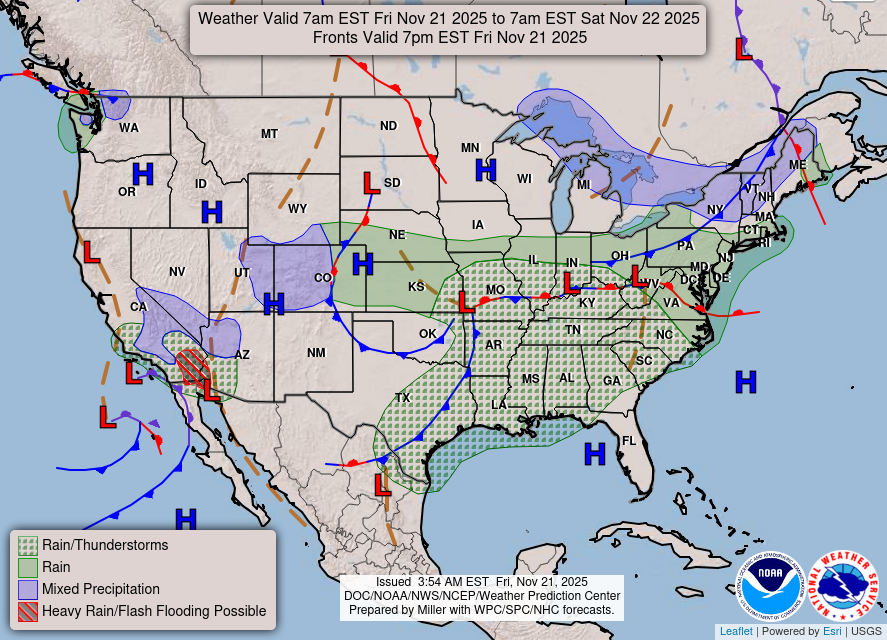
TOMORROW
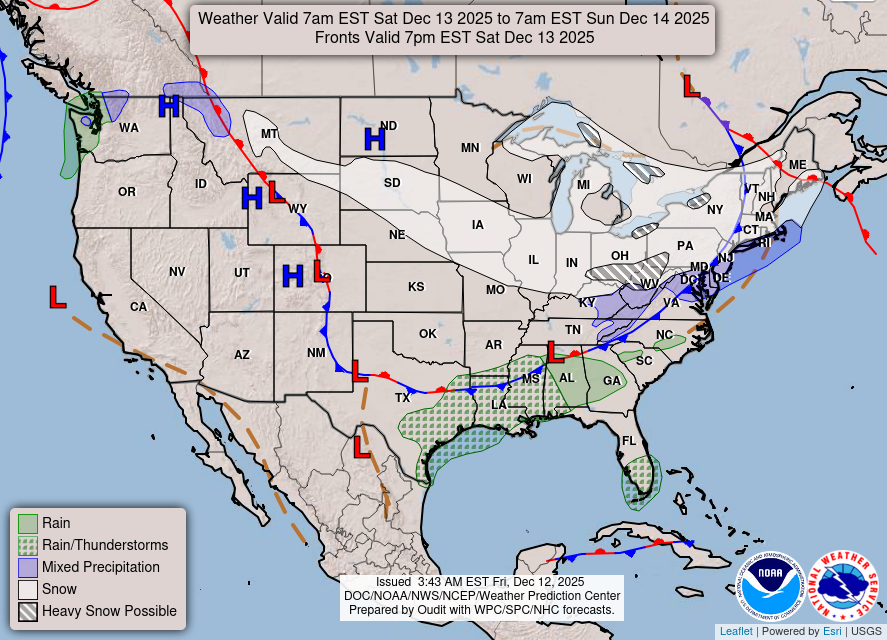
NEXT DAY
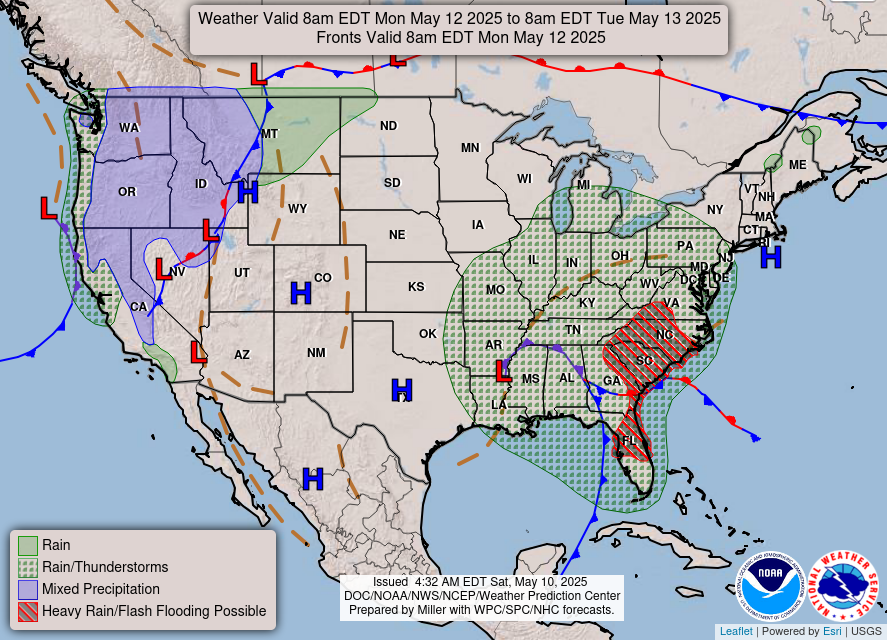
We have a new animation of the forecast which shows how things may play out over the next 60 hours. To update click ANIMATION. Doing so will get you to the dashboard. You can then step through the animation or hit LOOP on the upper right of the display. You will have to hit the back arrow ← at the top left on your computer to get back into this article. It is a little more trouble than before but I think NOAA scrapped the animation routine I was using so we have to keep up with “progress”.
The NWS Climate Prediction Center’s: Watches, Warnings, and Advisories plus other information can be found HERE. That takes you to the NWC Severe Weather Site. From there you can select among many categories of information. Remember to hit the back arrow ← at the top left of your screen to return to this article.
ATMOSPHERIC RIVERS
This tells us what is approaching the West Coast. Click HERE to update If I have not gotten around to doing the update. Here is some useful information about Atmospheric Rivers.

Below is the current five-day cumulative forecast of precipitation (Updates can be found HERE)
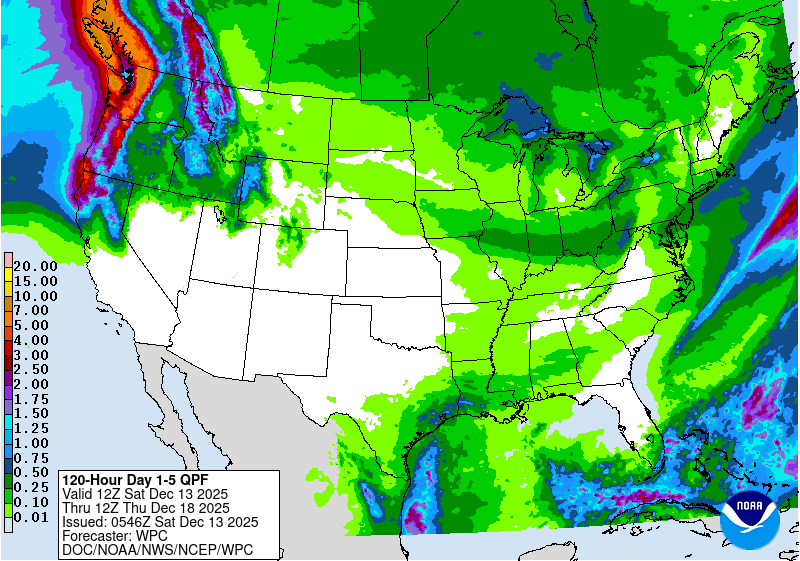
Ski SnowReports
New Feature – Ski Reports. It is difficult to find reports that auto-update on-screen (and they are very long) but these links will get you to them – If you have additional suggestions make them in the comments section after every Econcurrents Article and we may add those links. We will try to not have too much overlap as that can add to the confusion.
Snow Forecasts. And remember this shows natural snow. Ski resorts also make their own snow.
Day 1
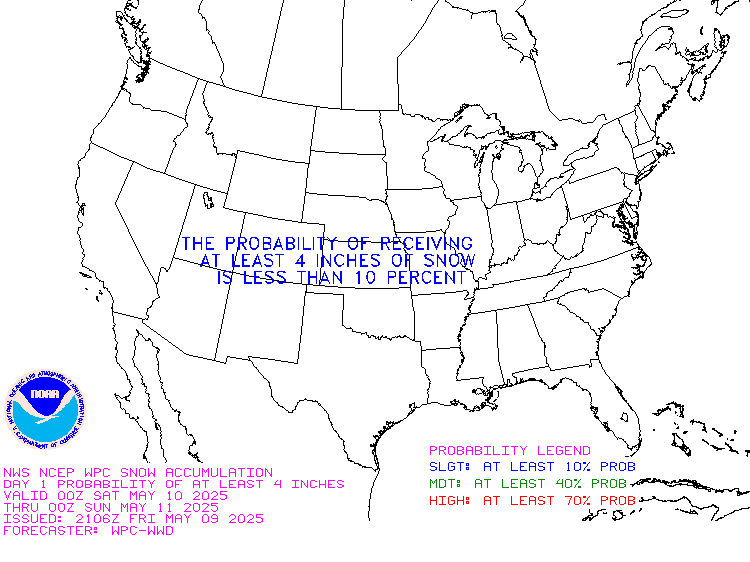
Day 2
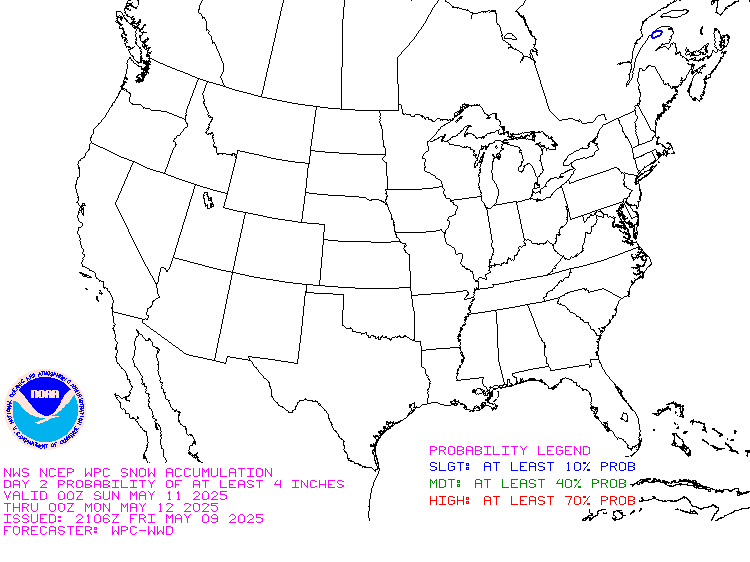
Now we look at Intermediate-Term “Outlook” maps for three time periods. Days 6 – 10, Days 8 – 14, and Weeks 3 and 4. An outlook differs from a forecast based on how NOAA uses these terms in that an “outlook” presents information as deviation from normal and the likelihood of these deviations.
Below are the links to obtain updates and additional information. They are particularly useful if you happen to be reading this article significantly later than when it was published. I always try to provide readers with the source of the information in my articles. These links may also be useful for those viewing this article on a cell phone or other small screen.
| Days 6 – 10 (shown in Row 1) | Days 8 – 14 (Shown in Row 2) | Weeks 3 and 4 (Shown in Row 3 but updates only on Fridays) |
| https://www.cpc.ncep.noaa. gov/products/predictions/610day/ | https://www.cpc.ncep .noaa.gov/products/predictions/814day/ | https://www.cpc.ncep.noaa.gov/products/predictions/WK34/ |
Showing the actual maps. They should now update automatically. The Week 3 – 4 Outlook only updates on Fridays. So below is what I call the Intermediate-term outlook. On Fridays, it extends out 28 Days. That declines day by day so on Thursday it only looks out 22 days until the next day when the Week 3 – 4 Outlook is updated and this extends the outlook by one additional week.
| 6–
10
|
|
|
| 8–
14 |
|
|
| 3–
4 |
|
|
HAZARDS OUTLOOKS
Click here for the latest complete Day 3 -7 Hazards forecast which updates only on weekdays. Once a week probably Monday or Tuesday I will update the images. I provided the link for readers to get daily updates on weekdays. Use your own judgment to decide if you need to update these images. I update almost all the images Friday Night for the weekend edition of this Weather Report. So normally readers do not need to update these images but if the weather is changing quickly you may want to.
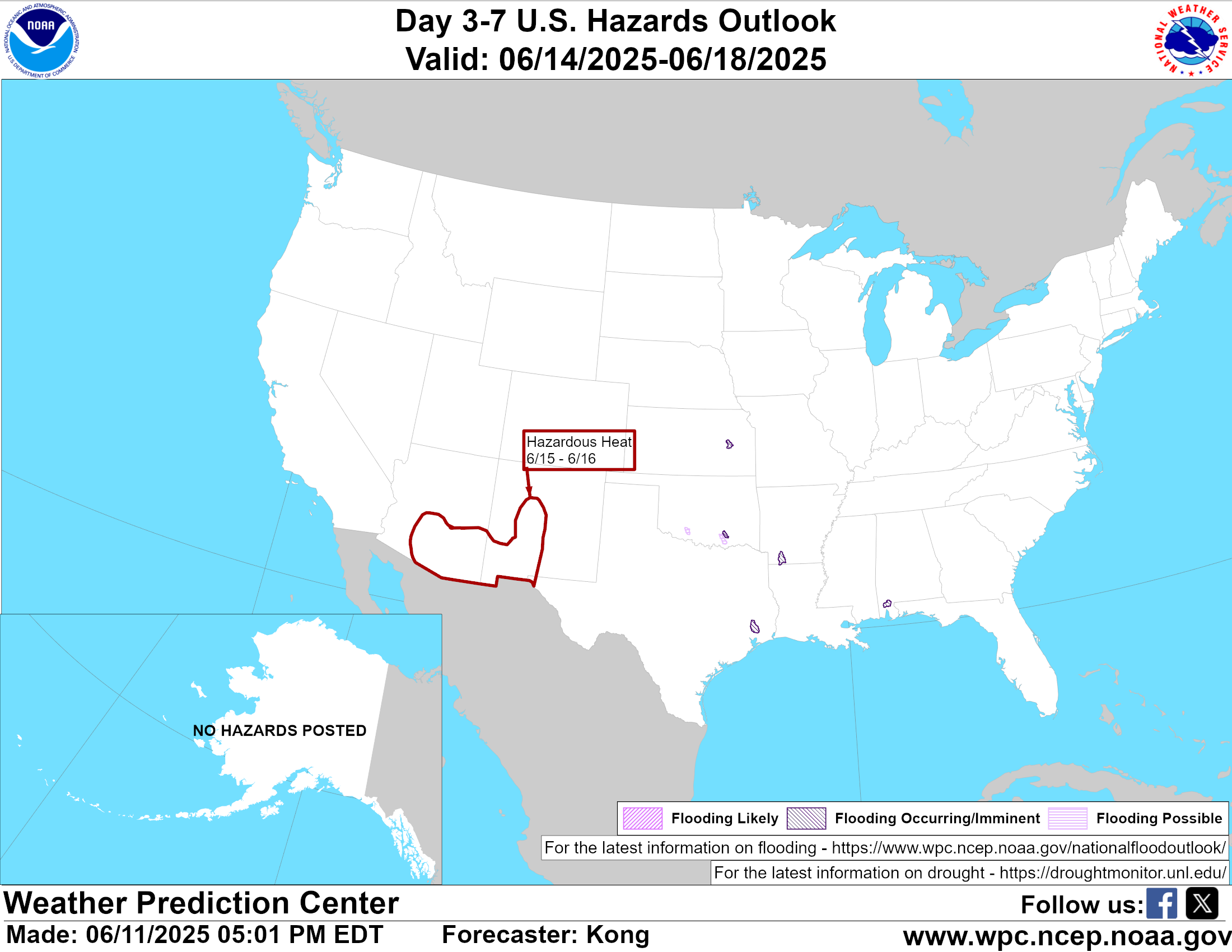
Temperature month to date can be found at https://hprcc.unl.edu/products/maps/acis/MonthTDeptUS.png
Precipitation month to date can be found at https://hprcc.unl.edu/products/maps/acis /MonthPNormUS.png
World Forecast [that website is has been intermittent so be patient]
Below are the Day 1 -3 and 4-6 forecasts for temperature and precipitation. Updates and much additional information can be obtained HERE
World Temperature Anomalies

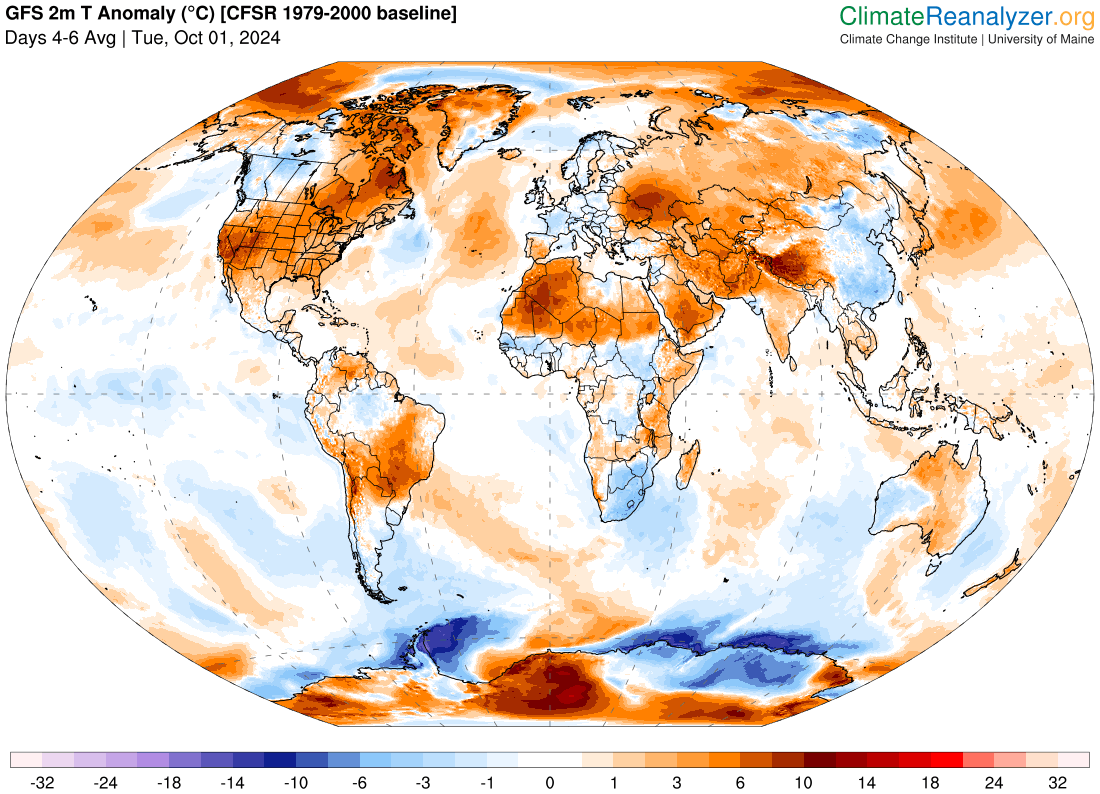
World Accumulated Precipitation
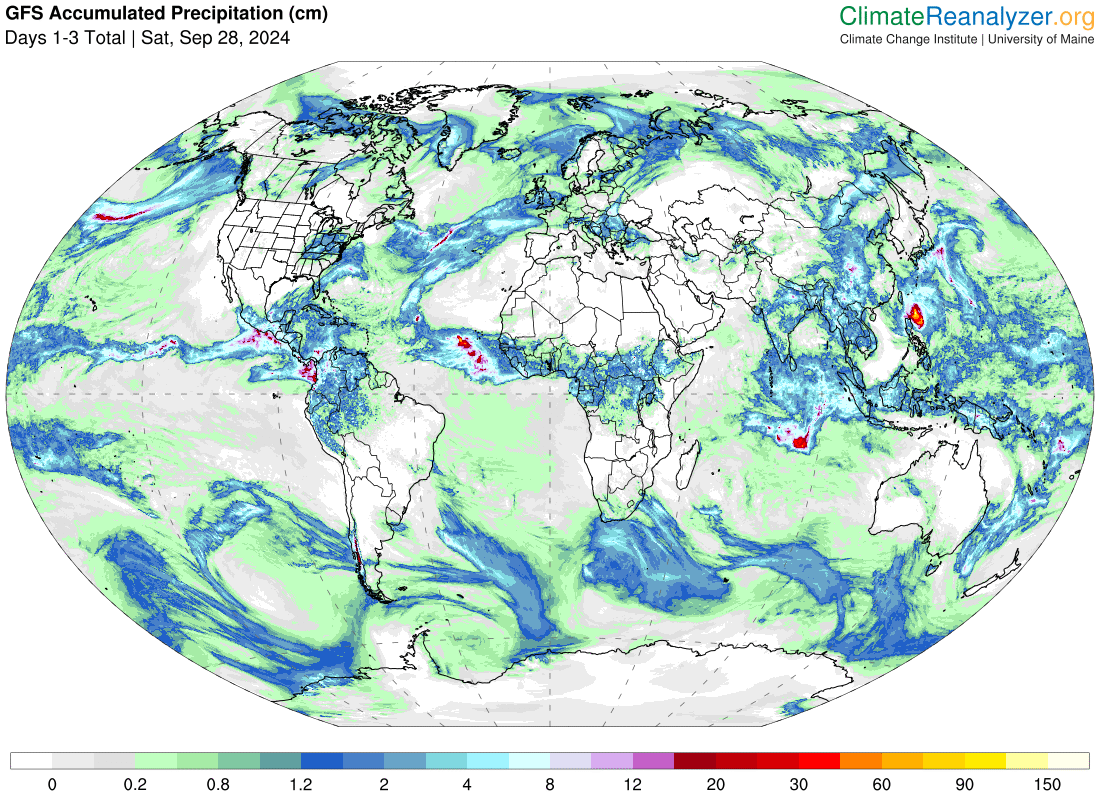
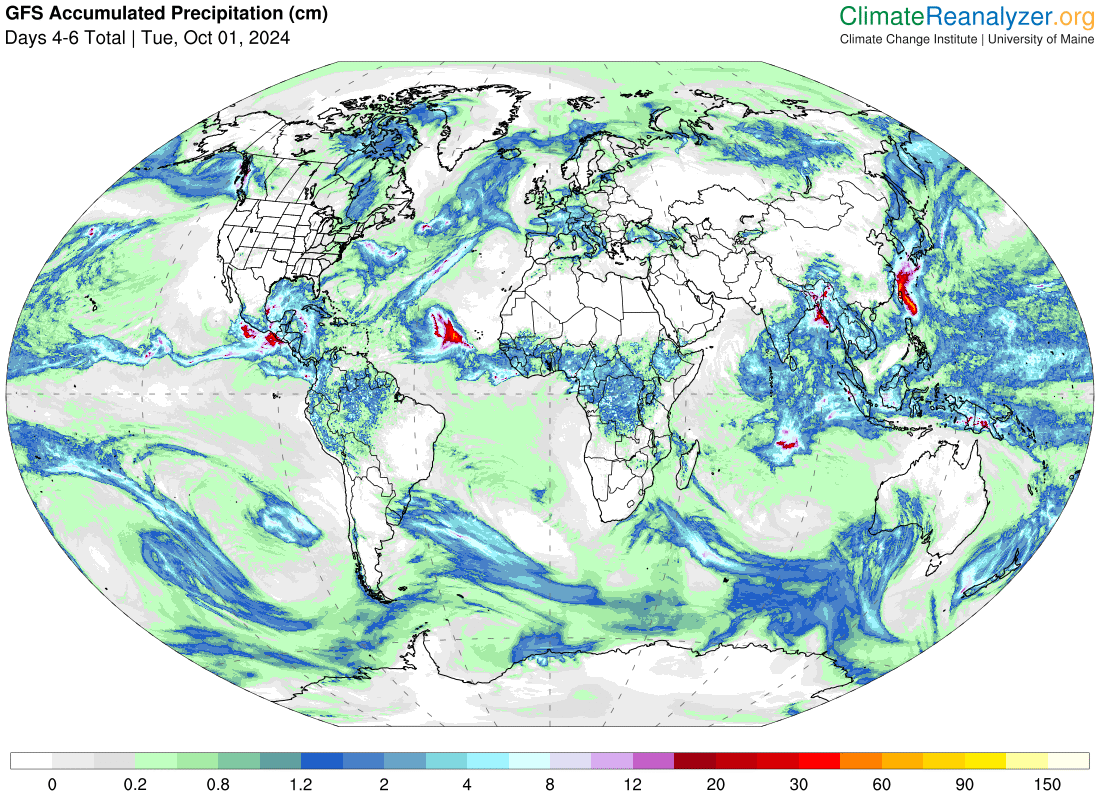
This information is provided by the University of Maine. They draw upon many different sources. There is a lot of information available at the link provided. I have just provided two useful forecasts. There are probably over a hundred different forecasts available from this source.
Worldwide Tropical Forecast (This is a NOAA Product)
This graphic updates on Tuesdays) If it has not been updated, you can get the update by clicking here Readers will only have to do that if they are reading this article much later than the date of it being published.
Information on Tropical Storms can be found HERE. Western Pacific information can be found HERE. Note that unless there is an out-of-season storm the below images will not update until the National Hurricane Center starts their seasonal update of these maps on June 1. I include them simply because there can be an out-of-season event in which case it should show up in these maps.
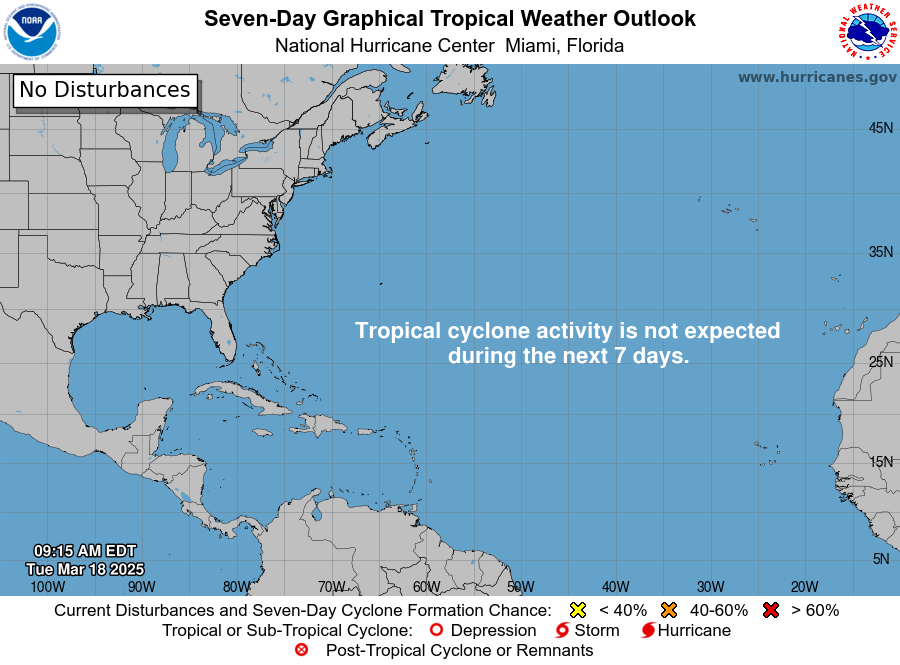
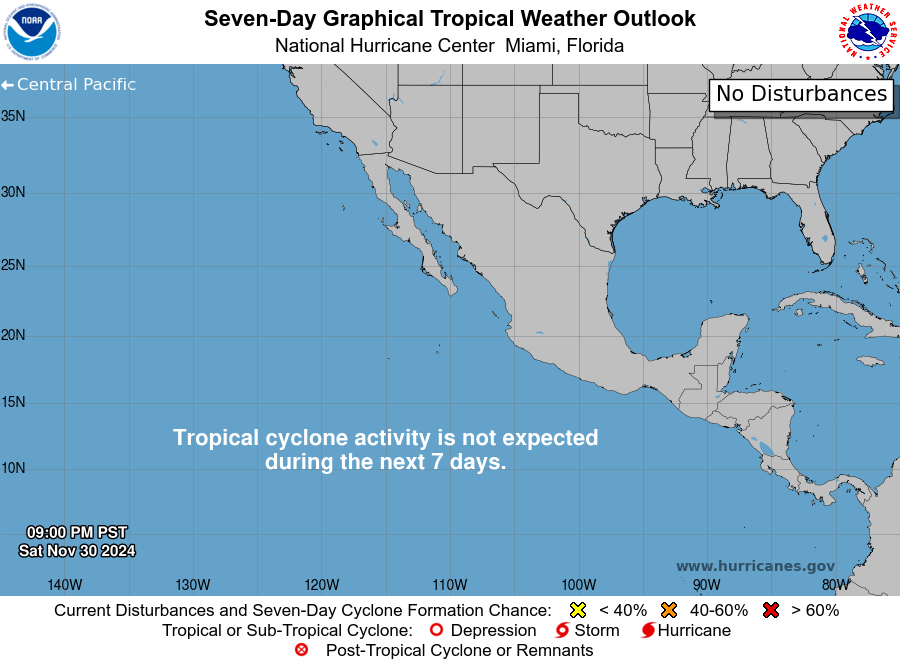
–
| I hope you found this article interesting and useful. |

